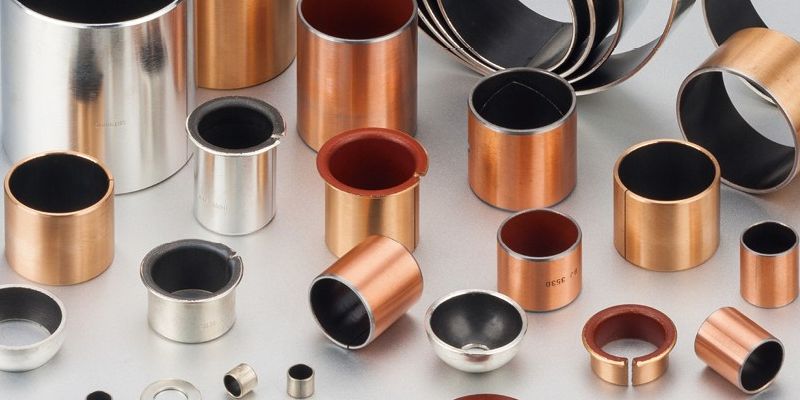Last Updated on October 17, 2024 by Chen

Let’s cut straight to it. Low friction materials can be a game-changer for industries where reducing wear and tear is crucial. Whether you’re working with machines, conveyor systems, or aerospace components, knowing what materials to use makes all the difference.
So, what are the best low-friction materials?
Here’s a breakdown of the top options, and I’ll throw in a few practical tips to help you decide what’s right for your job.
PTFE (Teflon®)
Dynamic Coefficient of Friction: 0.10
PTFE is the king when it comes to low friction coatings. You’ve probably heard of it as Teflon® – yes, the stuff they use on non-stick frying pans. But it’s not just for cooking. PTFE is resistant to chemicals and heat, making it perfect for applications that need a slippery surface and durability. Industries like food processing and pharmaceuticals are big fans.
Why use PTFE?
- Non-stick surface: Reduces build-up and makes cleaning easy
- Chemical resistance: Ideal for harsh environments
- Thermal resistance: Handles high heat without a sweat
UHMW (Ultra High Molecular Weight Polyethylene)
Dynamic Coefficient of Friction: 0.14
UHMW is another heavy hitter. It’s a self-lubricating plastic, which means less maintenance for you. Whether it’s conveyor belts or wear strips, UHMW gets the job done thanks to its exceptional wear resistance.
What makes UHMW stand out?
- Self-lubricating: Fewer greases and oils needed
- Tough as nails: Super durable, lasts long in abrasive environments
- Versatile: Works great in wet and dry conditions
NYLOIL® (Nylon with Additives)
Dynamic Coefficient of Friction: 0.12
Nylon itself is solid, but when you add plant-based lubricants, you get NYLOIL®, which is perfect for applications like bushings. It reduces friction without needing external lubrication – less downtime and maintenance.
Why choose NYLOIL®?
- Self-lubricating additives: Built-in friction reducer
- Durable: Great for components that face continuous movement
- Sustainability: Uses plant-based lubricants
PEEK (Polyether Ether Ketone)
Dynamic Coefficient of Friction: 0.32
PEEK is the high-performance option here. While its friction rating isn’t the lowest, it offers unmatched strength and thermal resistance. PEEK is often found in aerospace, medical, and other high-demand environments where both durability and low friction are critical.
When should you use PEEK?
- High strength: Handles extreme conditions without breaking down
- Temperature tolerance: Ideal for hot or cold applications
- Perfect for precision parts: Used where tight tolerances are needed
Acetal (Delrin®)
Dynamic Coefficient of Friction: 0.25
Acetal is a workhorse plastic. Known for its dimensional stability, it’s excellent for mechanical applications where moisture resistance and precision are important. Its low friction properties make it ideal for precision parts that need to stay put over time.
Why is Acetal a solid choice?
- Dimensional stability: Maintains shape even in changing conditions
- Wear-resistant: Stands up to repetitive motion
- Moisture-resistant: Won’t absorb water or swell
FAQs on Low Friction Materials:
1. What’s the best low friction material for high heat?
PTFE and PEEK are your best bets when heat resistance is needed. PTFE handles high temps and is chemical-resistant, while PEEK offers more mechanical strength in tougher environments.
2. Which low friction material is the most cost-effective?
UHMW and Acetal are both budget-friendly and durable. If you need something tough but don’t want to overspend, these are great options.
3. Can I use these materials in food processing?
Yes! PTFE and UHMW are both popular choices in food processing, thanks to their non-stick and easy-to-clean properties.
4. How do I know if a material is right for my application?
It all boils down to what you need. For example, if you need chemical resistance, PTFE is your go-to. For wear resistance and self-lubrication, UHMW or NYLOIL® might be better. If high strength and heat resistance are key, consider PEEK.
Final Thoughts:
When it comes to reducing friction and increasing the lifespan of your parts, choosing the right material is critical. From PTFE’s unbeatable non-stick properties to PEEK’s high-performance abilities, there’s a low friction material for every application.
If you’re still on the fence about which one fits your needs, just think about what matters most in your project – durability, cost, temperature, or wear resistance.
Now you’re ready to make your pick!

